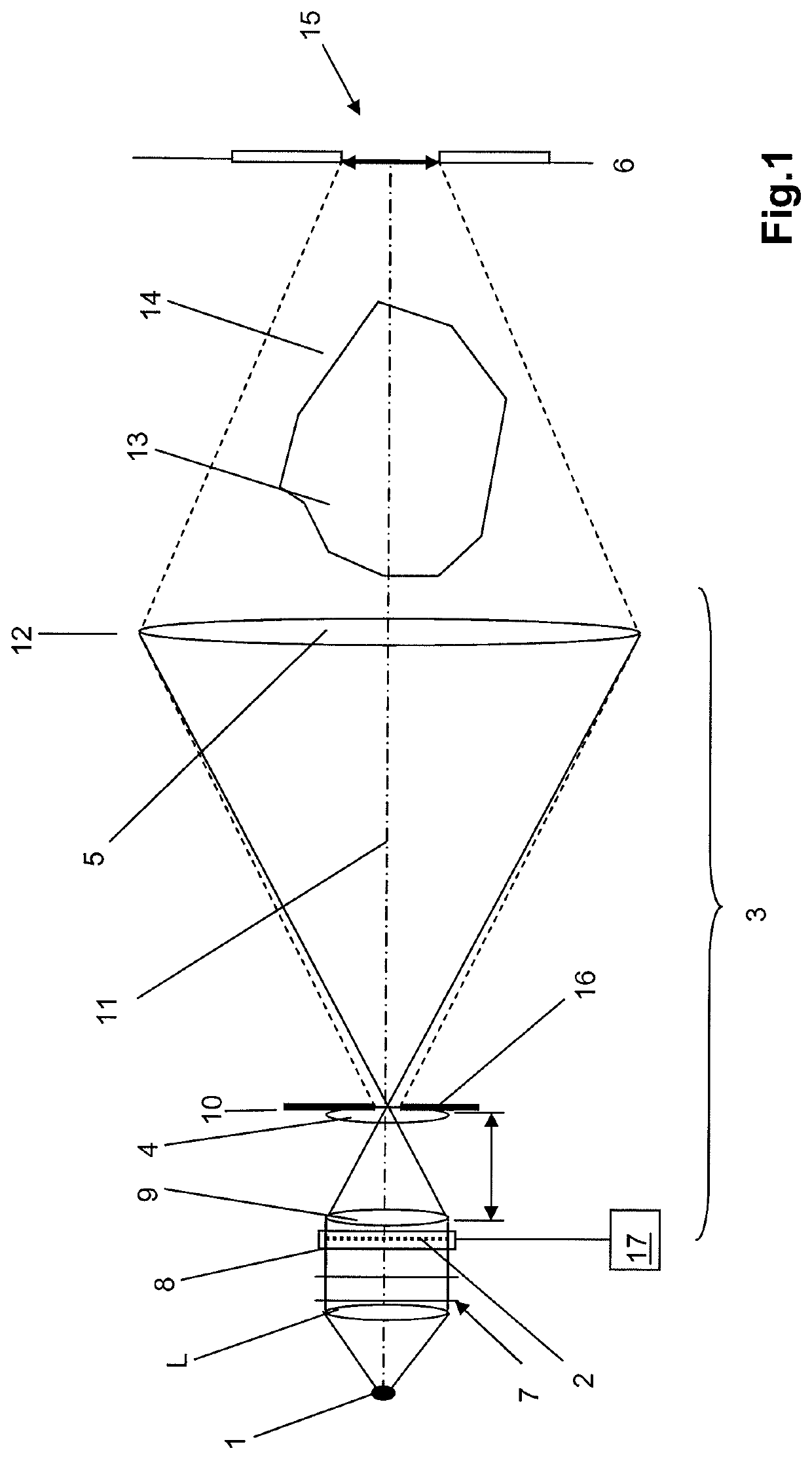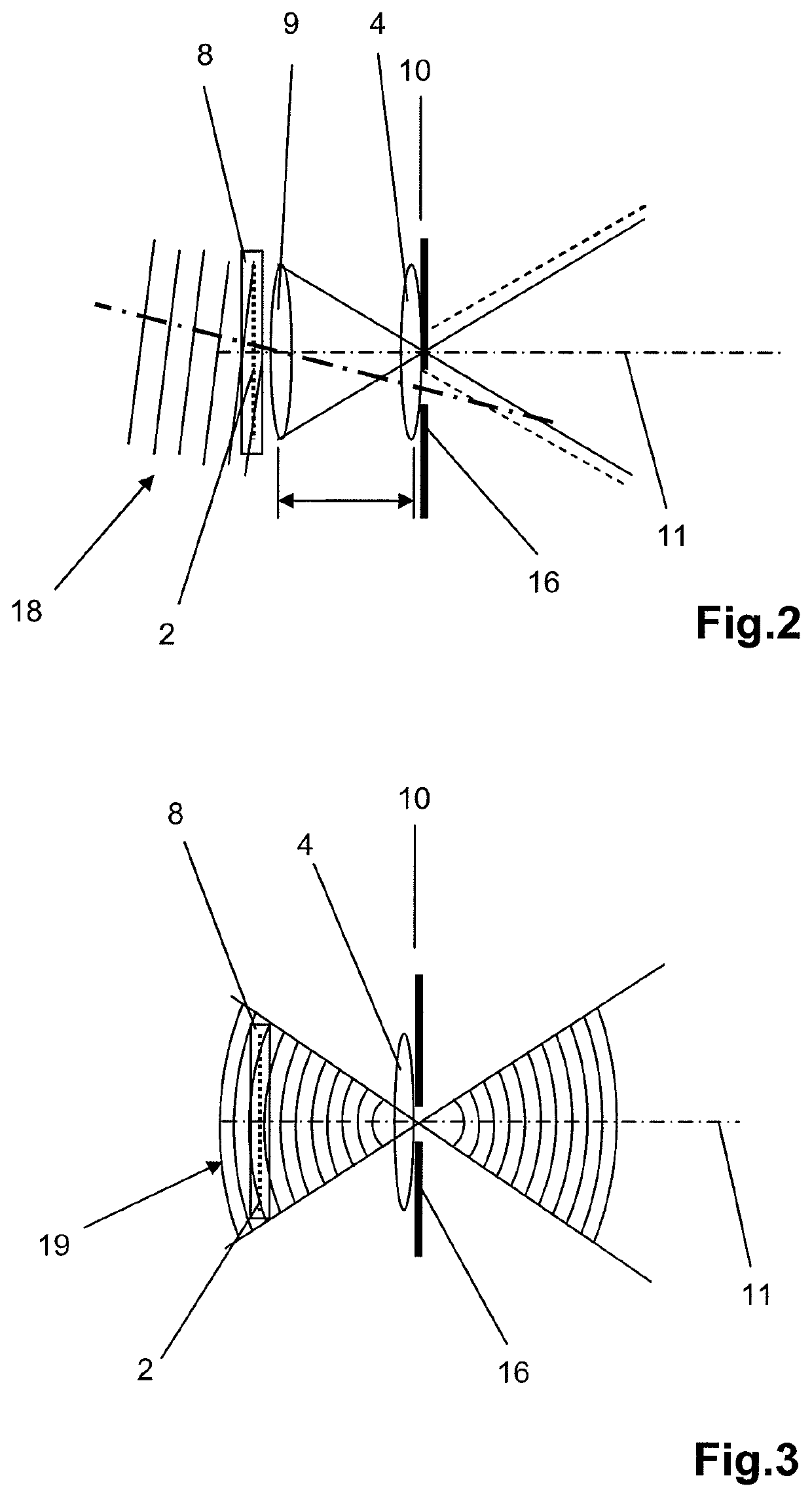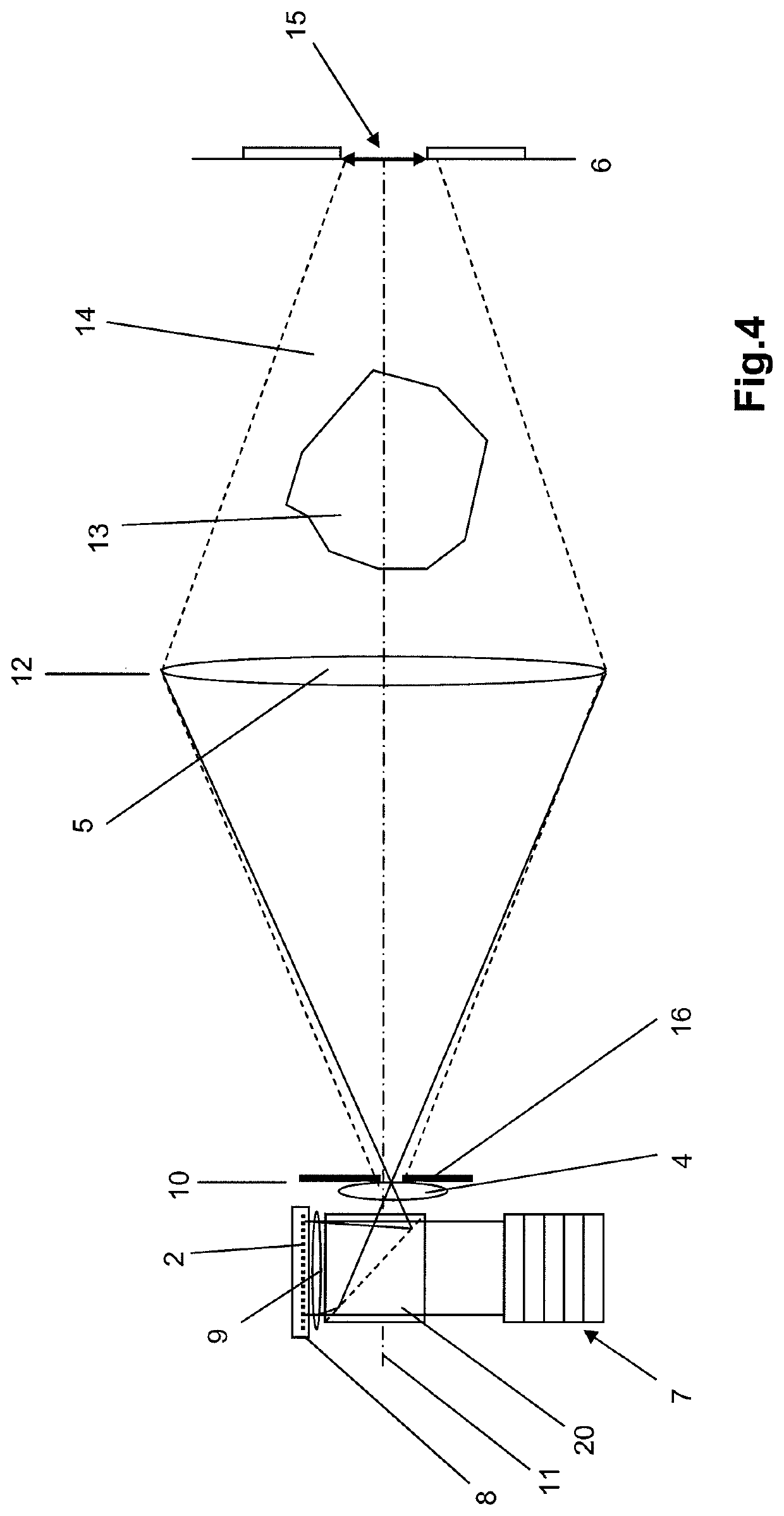Projection device and method for the holographic reconstruction of scenes
a projection device and holographic reconstruction technology, applied in the direction of holographic process, holographic object characteristics, digital holographic electronic components, etc., can solve the problems of large size limitation of reconstructions or reconstructed scenes, interference of light emitted by holograms in scene objects, and difficulty in viewing scenes with both eyes, etc., to achieve simple reconstruction, high quality, and low cost
- Summary
- Abstract
- Description
- Claims
- Application Information
AI Technical Summary
Benefits of technology
Problems solved by technology
Method used
Image
Examples
Embodiment Construction
[0041]FIG. 1 shows the working principle of the projection device according to this invention, where an imaging system 3 images an illumination device 1, here a point light source, to an observer plane 6. The imaging system 3 comprises a first imaging means 4 and a second imaging means 5. The light source 1 emits coherent or sufficiently coherent light, which is required for a holographic reconstruction of a scene. The light source 1 can be a laser, LED(s) or other light sources, where colour filters can also be used.
[0042]Now, the working principle of the projection device will be described with reference to FIG. 1. A wave emitted by the light source 1 is converted into a plane wave 7 with the help of a collimator lens L. The wave 7, which comes from the light source 1, and which is assumed to be plane after its passage through the collimator lens L, hits at a right angle a transmissive spatial light modulator 8 with regularly arranged pixels, which represents an encoded dynamic ho...
PUM
 Login to View More
Login to View More Abstract
Description
Claims
Application Information
 Login to View More
Login to View More - R&D
- Intellectual Property
- Life Sciences
- Materials
- Tech Scout
- Unparalleled Data Quality
- Higher Quality Content
- 60% Fewer Hallucinations
Browse by: Latest US Patents, China's latest patents, Technical Efficacy Thesaurus, Application Domain, Technology Topic, Popular Technical Reports.
© 2025 PatSnap. All rights reserved.Legal|Privacy policy|Modern Slavery Act Transparency Statement|Sitemap|About US| Contact US: help@patsnap.com



